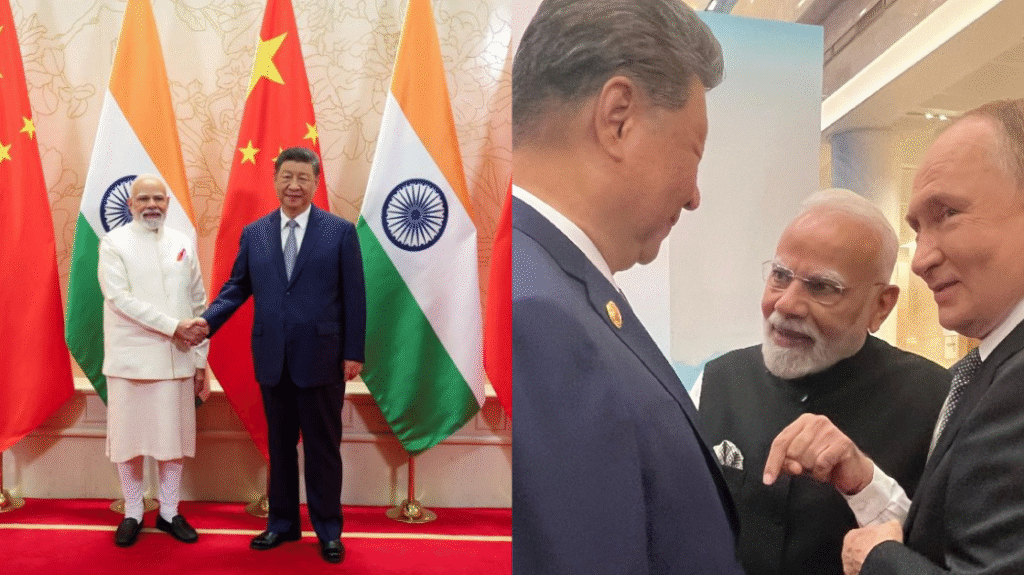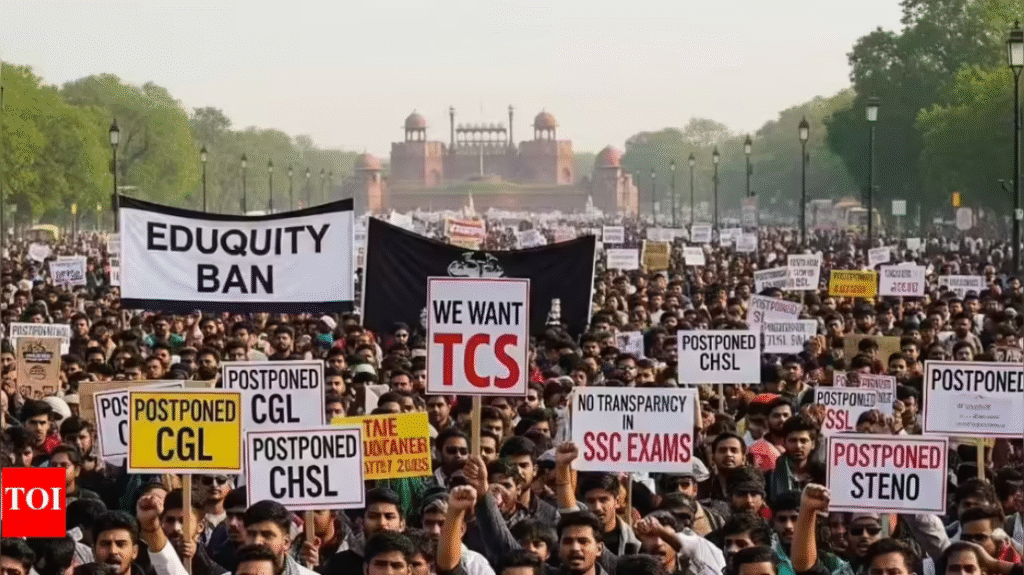In a landmark diplomatic moment, Prime Minister Narendra Modi held a formal bilateral with Chinese President Xi Jinping on the sidelines of the Shanghai Cooperation Organisation meet in Tianjin—their first such engagement in seven years. The Modi Xi Jinping SCO Summit interaction set the tone for a cautious thaw, with both sides signalling readiness to stabilise ties while protecting core interests.
What the Modi Xi Jinping SCO Summit signals
According to official readouts and on-ground reporting, the leaders agreed that sustained peace along the Line of Actual Control is essential for progress in the wider relationship. They acknowledged last year’s disengagement and the relative calm since, and discussed guiding principles for the next phase of engagement. This framing indicates that the Modi Xi Jinping SCO Summit was not a photo-op but a structured conversation to re-establish channels and a floor under the relationship.
Xi used evocative imagery—calling friendship between the civilisational “dragon and elephant” the “right choice”—to pitch good-neighbourliness and a broader cooperative agenda. Modi, in turn, underscored India’s commitment to improving ties while safeguarding security and sovereignty. Together, those messages hint at a slow pivot from crisis management to managed competition.

The wider SCO frame
The Tianjin summit itself was designed to do more than optics. Xi proposed accelerating plans for a SCO development bank and announced a fresh loan window worth roughly $1.4 billion for members—moves aimed at expanding the grouping’s economic muscle beyond its original security remit. That proposal, coupled with plenary remarks on resisting “Cold War mentalities,” situates the Modi Xi Jinping SCO Summit inside a larger push for a more multipolar order.
Geopolitics in the backdrop
The timing matters. The meeting arrived just days after Washington’s new tariff salvo on Indian goods, complicating New Delhi’s trade posture and adding a fresh layer to India-U.S. dynamics. Analysts read the Modi Xi Jinping SCO Summit as New Delhi balancing hard realities: maintaining strategic autonomy, engaging Beijing pragmatically, and keeping options open with Moscow and other Eurasian partners present in Tianjin.
Meanwhile, Russia’s Vladimir Putin also met leaders on the margins, underscoring an active RIC (Russia-India-China) theatre at SCO. Modi’s agenda included a bilateral with Putin and a plenary speech spotlighting connectivity, regional security, and clear condemnation of double standards on terrorism—another sign that India intends to use the forum to push consistent counter-terror messaging.
Substance over symbolism
Officials said the boundary question “figured” in the talks, with both sides noting that maintaining tranquillity remains a prerequisite. That carefully chosen language is consistent with India’s stance since Galwan: progress across the relationship cannot be divorced from peace at the border. In parallel, technocratic ideas—resuming stalled exchanges, exploring civil aviation links, and faith tourism such as Kailash-Mansarovar routes—were acknowledged as practical next steps should the security situation permit. The Modi Xi Jinping SCO Summit thus aimed to reopen a lane for incremental confidence building without papering over differences.
Soft power and public optics
Tianjin rolled out a cultural welcome for Modi, with images of the Indian PM alongside Xi receiving prominent play in Chinese media. The softened optics—joint visuals, cordial body language, and carefully crafted editorials—were meant to reach domestic and regional audiences, telegraphing that Beijing and New Delhi can talk even amid unresolved disputes. Coverage highlighted the symbolism of two ancient civilisations engaging at a time when the Global South seeks a louder voice. This public narrative amplified the Modi Xi Jinping SCO Summit beyond pure statecraft.
Key takeaways at a glance
- Border management first: Leaders reaffirmed that border calm underpins any wider reset.
- Economic agenda grows: Xi’s pitch for an SCO bank and fresh lending widens the bloc’s remit.
- Strategic autonomy: New Delhi is engaging Beijing while navigating sharper U.S. trade headwinds.
- Counter-terror line stays firm: India reiterated a consistent stand against terror double standards.
- Optics matter: Cultural outreach and front-page treatment amplified soft-power cues.
Why this meeting matters for Indian law-policy readers
For legal and policy professionals, the Modi Xi Jinping SCO Summit resets the context for everything from trade remedies and tariff litigation to investment screening, procurement, tech transfers, and cross-border data norms. If sustained, a thaw could unlock incremental regulatory coordination (customs, aviation, logistics), even as both sides firewall sensitive sectors. Conversely, any flare-up would carry immediate consequences for export controls, supply-chain contracts, and compliance risks across pharma, electronics, and renewables.
The road ahead
No one meeting erases structural disagreements—on the border, market access, or the Indo-Pacific. Yet, by re-starting high-level dialogue and sketching broad principles, the Modi Xi Jinping SCO Summit has nudged relations out of a freeze. Watch for working-level engagements, defence hotline rhythms, trade facilitation pilots, and people-to-people initiatives as near-term indicators of traction. Ultimately, the Modi Xi Jinping SCO Summit will be judged by whether it produces concrete de-escalation on the ground and steady, verifiable progress in the months ahead.
To read more Indian Laws and news, visit Legal Guide India



